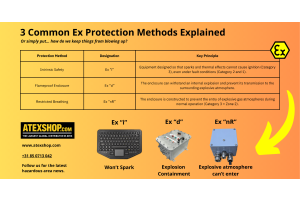Knowledge
-
- April 23, 2025
Explosion protection methods are essential to ensuring equipment can safely operate in hazardous areas where flammable gases, vapours, or mists may be present. Among the most recognized methods are Ex d (flameproof), Ex e (increased safety), and Ex i (intrinsic safety). But what about Ex nR?
Defined in the standard EN IEC 60079-15, Ex nR—or the restricted-breathing enclosure—is a lesser-known explosion protection method for equipment used in Zone 2 hazardous areas. This method focuses on preventing the ingress of explosive atmospheres into the enclosure, reducing the risk of ignition during normal operation.
Let’s dive into what makes Ex nR unique, what types of devices typically use it, and how the relevant standard (60079-15) outlines its implementation.

